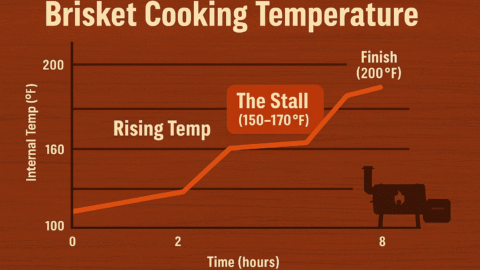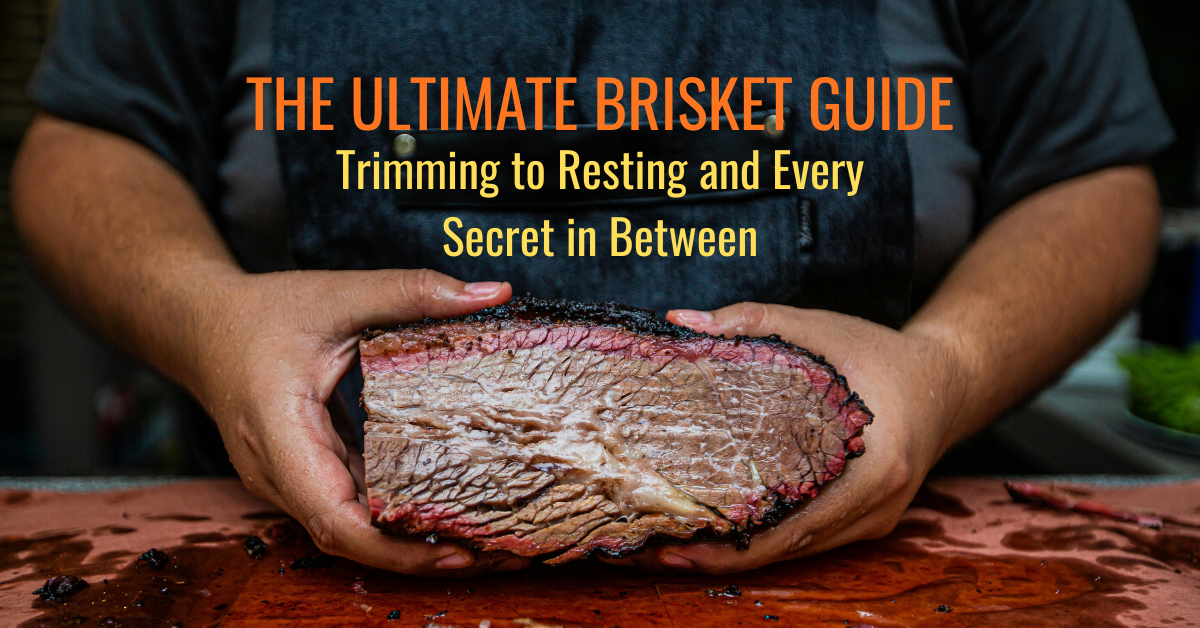You’ve tended the fire all morning, dialed in your smoke, and watched the brisket slowly climb in temperature. Then, right around 160°F, the needle stops. One hour passes. Then two. Nothing.
Congratulations, you’ve met the infamous brisket stall the stage that has broken the hearts of many first-time pitmasters.
Here’s the good news: the stall isn’t a failure, it’s BBQ science in action. And if you know how to handle it, you’ll come out with brisket that’s as juicy as a Central Texas slice and as flavorful as anything pulled from a Hill Country pit.
Table of Contents
- What Is the Brisket Stall?
- When Does the Stall Happen?
- Why the Stall Happens
- Ways to Beat the Stall
- Patience (Traditional Way)
- Texas Crutch (Foil or Paper Wrap)
- Increase Pit Temp
- Combo Method
- Best Woods & Smoke for This Stage
- Tools That Help During the Stall
- Final Thoughts
What Is the Brisket Stall?
The brisket stall is the plateau in cooking when the internal temperature levels off between 150–170°F and refuses to budge for hours.
💡 Pro Tip: The stall is not a mistake. It’s a natural step that every pitmaster has to face.
When Does the Stall Happen?
- Typically between 150–170°F internal temp
- Duration can be anywhere from 1 to 6 hours depending on:
- Brisket size
- Pit temperature
- Humidity
Why the Stall Happens?
Think of it like sweat on a hot Texas afternoon. As brisket cooks, moisture evaporates from the surface, which cools the meat and balances out the heat from your pit. The result: a long temperature plateau before the rise continues.
Ways to Beat the Stall
1. Patience (Traditional Way)
- Do nothing. Let the stall work itself out.
- Eventually, enough moisture evaporates and the brisket temp will climb again.
Pros: Best bark development.
Cons: Adds several hours to your cook.
2. Texas Crutch (Wrap)
When the brisket stalls around 160–170°F, wrapping helps push it through the stall, protects against drying out, and locks in juices. How you wrap affects the bark and cook time:
- Butcher Paper: Breathable, so steam escapes while still retaining moisture. This keeps bark firm and smoky. The traditional Texas choice.
- Foil (Texas Crutch): Completely seals in steam and juices, pushing through the stall fast. Brisket stays juicy, but bark softens. Great if you’re short on time.
- Foil Boat: Brisket sits in an open foil “boat” with the top exposed. The bark keeps developing while rendered fat collects in the foil for basting or au jus.
Brisket Wrapping Methods: Quick Comparison
| Method | Pros | Cons | Best For |
| Butcher Paper | Breathable: preserves bark texture and smoky flavor. Looks traditional. | Slower than foil, may lose a bit of juice in the paper. | Authentic Texas-style brisket |
| Foil (Texas Crutch) | Speeds through the stall, locks in moisture, very juicy results. | Soft bark, risk of “pot roast” texture if left too long. | Shorter cook times or tough weather |
| Foil Boat | Keeps top bark exposed, catches juices for basting/au jus, hybrid approach. | Longer cook than foil, can darken bottom bark. | Balance of bark + juiciness |
📦 Recommended: Oren Peach Butcher Paper.
3. Increase Pit Temp
- Raise your smoker from 225°F to around 275°F during the stall.
- Pushes the brisket forward without wrapping.
Pros: Faster cook, bark stays firm.
Cons: Bark may develop differently than a low-and-slow approach.
4. Combo Method
- Wrap the brisket and increase pit temp to 275°F.
- A favorite among competition teams.
Pros: Fastest route through the stall with solid results.
Cons: Bark won’t be as crusty as the patience method.
Best Woods & Smoke for This Stage
When your brisket is stalled, it’s absorbing some of the deepest smoke flavor of the cook.
- Post Oak: Balanced, traditional Texas smoke.
- Pecan: Sweet and nutty undertones.
- Mesquite: Bold, strong, use sparingly.
Looking for a different BBQ flavor? Read our blog: BBQ Wood Flavor Guide
💡 Pro Tip: Keep your smoke thin and blue. White, billowy smoke will make your brisket bitter.
Tools That Help During the Stall
- Probe Thermometer: Essential for accurate temps.
📦 Recommended: Dual-Probe Digital Thermometer (affiliate link) - Butcher Paper: For wrapping without ruining bark.
- Fire Management Tools: Chimney starter, charcoal basket, and heavy gloves keep your pit steady.
Final Thoughts
The brisket stall isn’t your enemy… it’s the pitmaster’s rite of passage. Whether you wait it out, use the Texas Crutch, raise pit temps, or combine methods, the key is consistency and patience.
Push through the stall, give your brisket a proper rest, and you’ll slice into meat that’s juicy, tender, and true to the spirit of Texas BBQ.
👉 Next up in the Brisket Trilogy:




